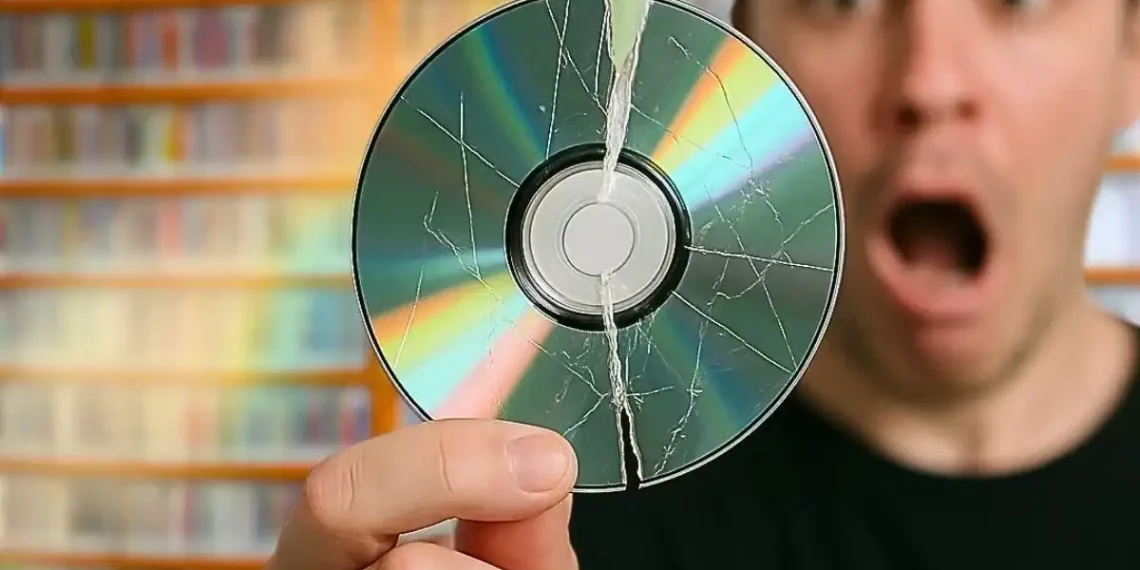10 Dangerous CD Myths People Still Swear By Online
Compact discs have been around far longer than anyone expected, but with that staying power comes a wild collection of myths and “fixes” that just won’t die. From how to clean them to what actually damages them, the internet is full of advice—some helpful, most not. Let’s clear the air and bust 10 of the most stubborn CD myths that people keep defending online.
1. “CDs Are Indestructible and Last Forever”
When CDs first hit shelves, they were hyped as indestructible and capable of delivering “perfect sound forever.” People even joked about spreading jam on them to prove their toughness.
Reality check: CDs aren’t superheroes. They can last longer than vinyl or tapes but are still vulnerable to sunlight, heat, and humidity, which can cause peeling, cracking, or delamination of the layers. So, treat your discs gently—store them in cases, keep them away from direct sunlight, and definitely don’t use them as coasters.
2. “One Tiny Scratch and Your CD Is Done For”
Many folks panic at the first sign of a scratch and toss out perfectly playable discs.
Reality check: Most scratches are harmless. Thanks to error-correcting tech like CIRC, your CD player can often read through minor scratches and dust. Only deep scratches (those you can feel with your fingernail) or cracks that break through the data layer cause serious trouble. If your CD skips, try another player or external drive before giving up.
3. “Wiping CDs in Circles Is the Best Way to Clean Them”
Since the data spirals from center to edge, many think wiping in circular motions makes sense.
Reality check: That’s actually the worst way to clean a CD! Circular scratches align with the data spiral and are tough for error correction to fix. Instead, wipe straight from the center out to the edge using a soft, slightly damp microfiber cloth. This radial motion keeps scratches from lining up with the data spiral and helps your CD player read the disc better.
4. “Toothpaste, Bananas, and Other Home Hacks Can Fix Any Scratched CD”
You’ve probably seen videos or posts promising that toothpaste or even banana peels can magically repair scratched discs.
Reality check: These DIY “fixes” are mostly hype. Toothpaste might polish out tiny scratches if used carefully, but it’s abrasive and can wear down the disc over time. The banana trick? Tests show it often makes things worse, not better. For serious scratches, professional resurfacing is the way to go—not your fruit bowl.
5. “Only the Shiny Side Matters — Scratches on the Label Side Don’t Affect Playability”
People tend to obsess over the underside of a CD but forget the label side is just as important.
Reality check: The thin aluminum layer just beneath the label holds your music. A scratch or puncture on the label side can damage this data layer permanently. So, always store CDs upright in cases or sleeves to protect both the artwork and the data.
6. “You Should Clean Your CDs Frequently to Keep Them in Top Shape”
Some music lovers think regular cleaning is essential, like with vinyl records.
Reality check: CDs don’t need constant cleaning if handled and stored properly. Over-cleaning can cause micro-scratches that add up. Clean only when you see fingerprints, dust buildup, or playback issues—and always use the proper wiping method.
7. “A Cracked CD Is Still Playable”
There’s a tempting belief that taping or gluing a cracked CD will let it keep working.
Reality check: This is dangerous! CDs spin at up to 20,000 RPM. Even a tiny crack can cause the disc to shatter inside your player, risking damage to your device and injury to you. If you see a crack, retire the disc immediately.
8. “CD Rot Is Inevitable After About 20 Years”
You might’ve heard CDs only last around two decades before they develop “CD rot”—bronze spots, peeling foil, and all.
Reality check: CD rot is real but not inevitable. Early manufacturing defects caused most of the notorious cases, but well-made CDs stored properly can last 50–100 years or more. Keep them cool, dry, and out of sunlight, and they’ll serve you well for a long time.
9. “Making Digital Copies of CDs Degrades Sound Quality”
People often think copying CDs is like dubbing tapes—each copy loses quality.
Reality check: Digital copying is different. A bit-perfect rip or burn creates an exact duplicate, with error-checking to ensure accuracy. Copies won’t degrade unless you convert to lossy formats like MP3. So feel free to back up your CDs without fear of losing sound quality.
10. “CDs Sound Better Than Any Digital File”
There’s still a camp insisting only CDs deliver “real” sound quality, dismissing streaming and downloads.
Reality check: CDs offer great sound at 16-bit/44.1 kHz, but many modern digital files surpass that with higher bit rates and sampling frequencies—think high-res FLAC or lossless streaming on Tidal and Qobuz. The real difference depends on mastering quality and your speakers or headphones, not just the format.
Bottom Line: Handle Your CDs With Care — But Don’t Believe Everything You Hear Online
CDs have stood the test of time better than many expected, but they’re not invincible. Next time you hear someone swear by a crazy home fix or “fact” about CDs, share the truth instead. With proper care and a bit of savvy, your discs can keep spinning beautifully for years to come.
This article was rewritten by JournosNews.com based on verified reporting from trusted sources. The content has been independently reviewed, fact-checked, and edited for accuracy, neutrality, tone, and global readability in accordance with Google News and AdSense standards.
All opinions, quotes, or statements from contributors, experts, or sourced organizations do not necessarily reflect the views of JournosNews.com. JournosNews.com maintains full editorial independence from any external funders, sponsors, or organizations.
Stay informed with JournosNews.com — your trusted source for verified global reporting and in-depth analysis. Follow us on Google News, BlueSky, and X for real-time updates.













